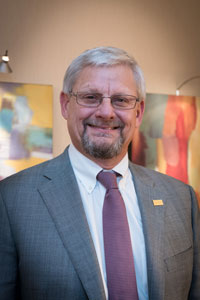The hottest topic in my in-box these days is the use of tele-dentistry in orthodontics. Let’s start with my opinion, that tele-dentistry is a good thing if used in the right and legal way. And like any tool, it can also be misused.

Where tele-orthodontics is seemingly most controversial is how it is used as a tool for orthodontic patients and the public. What are reasonable guidelines to assure that the health and safety of the public is primary?
In May, The AAO House of Delegates approved a revision to our Clinical Practice Guidelines defining Orthodontic Treatment:
“a complex, professionally guided process which alters the structure of the dento-facial complex requiring a clinical exam; pre-treatment diagnostic records such as radiographs; diagnosis and treatment planning; informed consent; supervision of the applied therapy; remediation and re-assessment of the therapy; retention; and retrospective evaluation by an appropriately trained and licensed dentist. Aspects of treatment require face-to-face, in-office interaction with an appropriately licensed clinician.”
Given these Guidelines, I believe before there is any orthodontic treatment one needs to physically see the person, assess the issues and consequences of treatment, advise the patient, and agree on the treatment option taken. Once treatment begins, then the key word is supervision. How we do supervision is decided by each and every one of us. We decide what is best for the patient. As always, it does need to comply with a state’s or province’s dental laws. I certainly see value using tele-orthodontics in our practice. It is a tool with great potential and we are welcoming it with open arms. However, like any other tool in our armamentarium, it needs to be used wisely.
The AAO is spending a lot of resources through our Consumer Awareness Program to provide consumers who want to know more about tele-dentistry with important, factual information on our website. The goal is to make our website the “go to” site for consumer education, see https://www.aaoinfo.org/_/online-orthodontic-companies/. In addition, the AAO legal team is continuing to work with state/provincial legislatures and regulators to assure they understand that the issue is patient health and safety and that any tele-dentistry laws are crafted with that in mind.
We are experts when it comes to orthodontic treatment. As members of the AAO, know your organization is working to educate the public and those whose responsibility it is to protect the public. Thank you for being a member, supporting our profession, and understanding the goal that the health and safety of the public is primary.
Please feel free to connect with me at any time on my cell at 315-569-8219.
John Callahan
Trustee, Northeastern Society of Orthodontics
